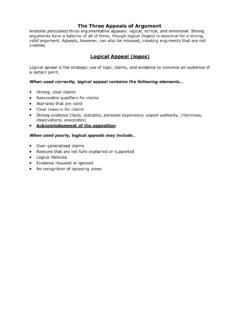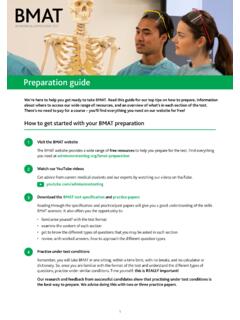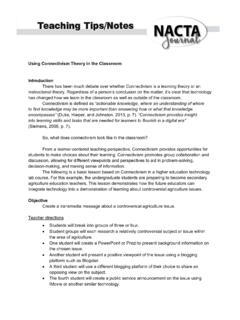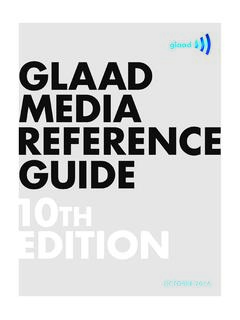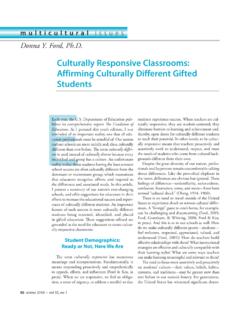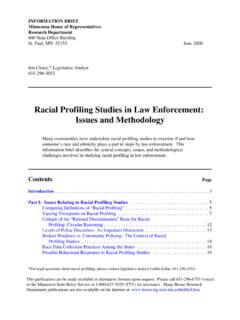Transcription of FIVE TYPES OF ESSAYS - MWSU Intranet
1 Center for Academic Support THE COLLEGE STUDENT S GUIDE TO WRITING five TYPES OF ESSAYS (Information obtained from Successful College Writing 2nd ed. by Kathleen T. McWhorter) Narrative Essay What is it? A narrative essay achieves a certain purpose through telling a story, which makes it interesting to the reader and also results in getting some point across. For example, you might write a story about meeting someone special to you. The purpose may be to tell how meeting this person affected your decision to attend college or to entertain the reader with a funny story about that person.
2 The purposes of writing narratives include the following: to create a sense of shared history, to provide entertainment, to offer instruction, and to provide insight. Some examples of narrative essay topics include a special person, event, or place. After choosing a topic, you should determine the main point you want to make about that topic and then concentrate on that throughout the rest of the paper. Guidelines for writing a narrative essay: 4 Make a specific point. Determine what the purpose of your essay is. State that point in your thesis statement, or controlling idea, and build upon it throughout the essay by using examples, stories, and other details that all relate back to the main idea.
3 4 Involve readers in the story and create a visual picture by using dialogue and physical description, which is achieved through telling events that happened and presenting problems that arose. Also include specific descriptive details so that the reader can easily picture the scene in each of the events. 4 Sequence events. Often this is done chronologically (the order in which events happened), but using flashbacks (writing the story from one point in time but then talking briefly about something that happened in the past) and foreshadowing (briefly talking about something that will happen in the future) can make the story more interesting.
4 4 Decide which point of view, first-person (from the author s point of view, using I ) or third-person ( using he, she, them, etc. instead of I ), works best for your essay, and tell the story from that viewpoint . Descriptive Essay What is it? A descriptive essay tells about a certain topic or story, using details to appeal to the five senses. It gives readers the ability to vividly imagine the situation or scene and feel as if they are experiencing it firsthand. To write a descriptive essay, you could choose a person, place, event, object, or experience and describe it thoroughly using many sensory details.
5 Guidelines for writing a descriptive essay: 4 Use sensory details. Appeal to sight, sound, smell, taste, and touch. Center for Academic Support 4 Use active verbs (in which the subject is doing the acting instead of being acted upon by something or someone else, such as Cindy hit the ball. instead of The ball was hit by Cindy. ). Also, use a variety of sentence TYPES , such as a simple sentence ( Tom went to the store. ), compound sentence ( Tom went to the store, and he bought a loaf of bread. ), complex sentence ( While Tom was at the store, he bought a loaf of bread.)
6 , or compound-complex sentence ( While Tom was at the store, he bought a loaf of bread, but he forgot to buy a gallon of milk. ). 4 Avoid vague language, such as pretty, really, a lot, and very. 4 Create a dominant impression (overall attitude, mood, or feeling about the subject), such as causing the readers to sympathize with you about a sad event that happened or to agree with you strongly on a certain controversial topic. Choose the details and descriptions that will help accomplish this impression. 4 Use comparisons.
7 In order to help make the descriptions even more vivid to the reader, use similes (such as His emotional state was like a roller coaster. ), metaphors (such as Her smile was a ray of sunlight in the dark sea of unfamiliar faces. ), personification (giving human characteristics to an object, such as The wind howled in my ears and beckoned me to walk further into the forest. ), and analogies (brief stories that relate to the topic). Determine the method of organization that works best for your essay: spatial (top to bottom, inside to outside, near to far), chronological (the order in which events happened), least-to-most, or most-to-least.
8 Comparison and/or Contrast Essay What is it? A comparison and/or contrast essay tells about two or more main subjects by pointing out similarities and/or differences. One way to write this type of essay would be to choose two or more objects, people, places, events, experiences, or ideas and compare and/or contrast them according to a few specific points. Guidelines for writing a comparison and/or contrast essay: 4 Have a clear purpose and a main point (to express ideas, to inform, to persuade, etc.). Make sure your subjects have something specific on which you can base your comparison and/or contrast.
9 4 Decide the order that best suits your essay. The two main ways you can choose to organize a comparison and/or contrast essay are point-by-point organization and subject-by-subject organization. point-by-point: switching back and forth between the subjects, comparing/contrasting them according to several main points subject-by-subject: writing about all the main points of one subject and then writing about all the main points of another subject, and so on, referring back to the other subject(s) in a comparing/contrasting way 4 In your thesis statement, or controlling idea, include the subjects.
10 Identify whether you will be talking about similarities, differences, or both; and state your main point. 4 Have a sufficient number of significant characteristics and details (which are the various points you use to compare and/or contrast the subjects), and give an equal amount to all Center for Academic Support sides. Cause and Effect Essay (also called causal analysis) What is it? A cause and effect essay analyzes what causes certain things to happen or why things are a certain way, the results brought about by certain events, or both.

